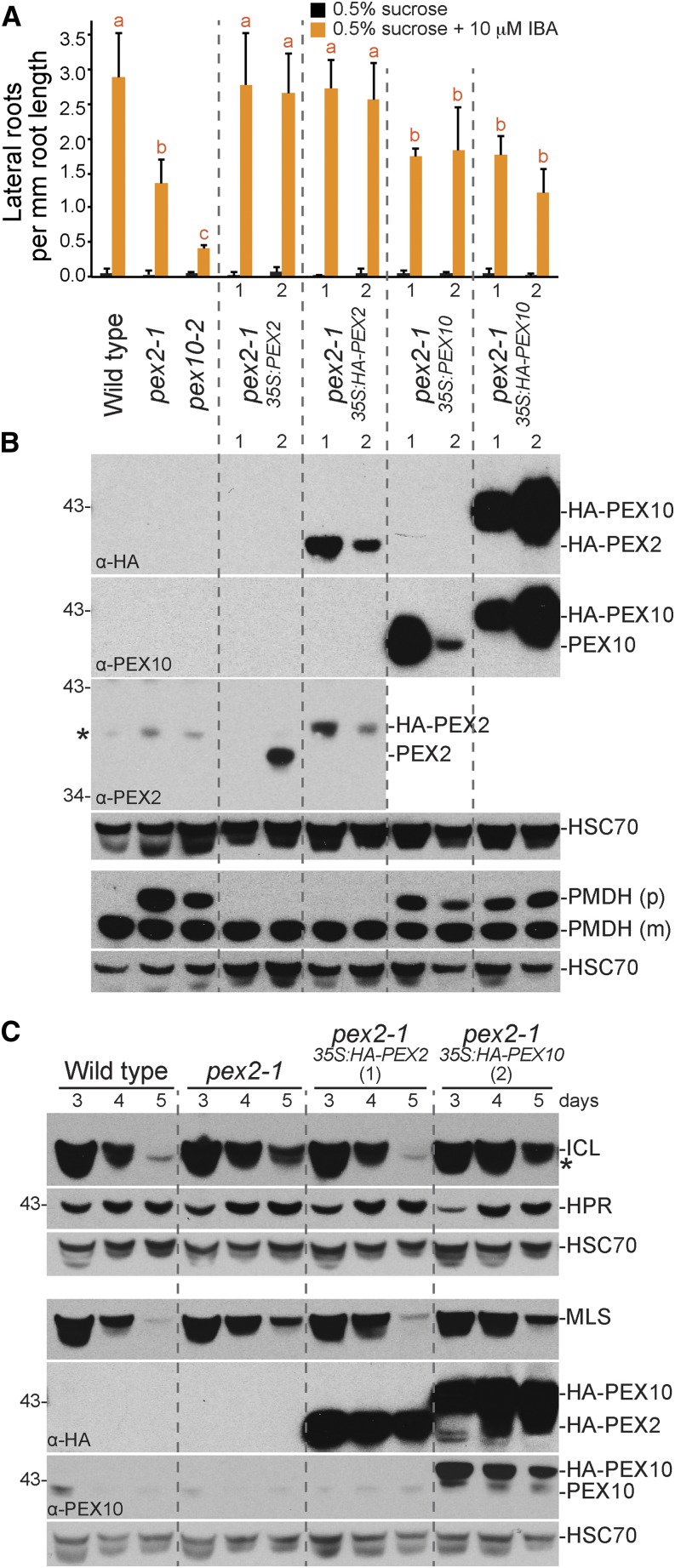Figure 4.
PEX2 (but not PEX10) rescues pex2-1 physiological and molecular defects. A, Overexpressing PEX2 (but not PEX10) restored IBA-responsive lateral rooting to pex2-1. Four-day-old seedlings were transferred to the indicated media for 4 additional d. Error bars show sds of the mean number of lateral roots per millimeter of root length (n = 8). Different letters above bars represent significantly different means (one-way ANOVA, P < 0.005). B, Expressing PEX2 (but not PEX10) rescued the PMDH PTS2 processing defect of pex2-1. Protein extracts from 8-d-old light-grown seedlings were processed for immunoblotting, and membranes from duplicate gels were serially probed with the indicated antibodies. The HA antibody detected both HA-PEX2 and HA-PEX10. The PEX2 (or PEX10) antibody detected untagged and HA-tagged PEX2 (or PEX10). HSC70 was used to monitor loading. *, A cross-reacting band that appears with the PEX2 antibody (Sparkes et al., 2005). C, The ICL and MLS stabilization of pex2-1 was rescued by transgenic HA-PEX2 (but not HA-PEX10). Extracts from 3-d-old to 5-d-old seedlings were processed for immunoblotting, and membranes from duplicate gels were probed with the indicated antibodies. *, A cross-reacting band that appears with the ICL antibody. In A and B, two independent transgenic lines (1 and 2) were examined for each transgene; C used the HA-PEX2 and HA-PEX10 lines showing higher steady-state protein levels. These experiments were repeated twice with similar results.

